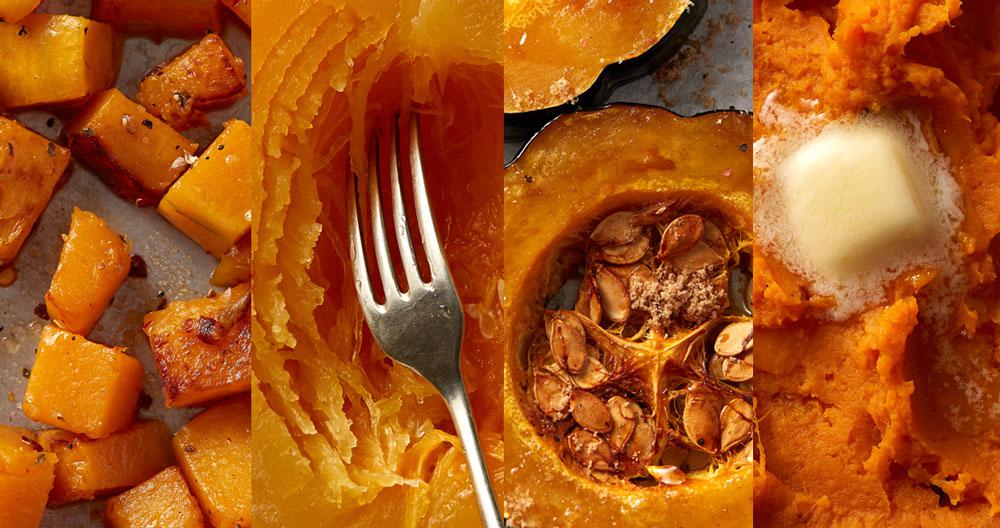Beautiful outside and in.
First things first. Yes, squash is actually classified as a fruit since it has seeds inside. But of course, everyone thinks of it as a vegetable, and that’s fine since, like all vegetables, squash is an excellent addition to everyday meals for its health and nutritional benefits. What’s more, there are hundreds of varieties of squash grown worldwide and probably a dozen delicious kinds at your nearest grocery store. The knock on winter squash might be, well, that tough exterior. But the beautiful colors and patterns do serve a purpose. They hint at the goodness within.

News flash: The seeds are edible too.
Summer squash and winter squash are in the same family of vining plants — Cucurbitaceae — along with gourds, pumpkins and even watermelons and cucumbers. The main difference between summer and winter squash is when they’re picked and how long they can be stored. Harvested at summer’s peak, summer squash have tender, edible skins and typically keep for just a couple weeks. Winter squash have much harder exteriors and are typically harvested in the fall. They’re an ideal veggie during the winter because they can last for months, though all squash taste better closer to harvest.
A good kitchen tool for cutting open a winter squash is a standard 8-inch chef’s knife, but any heavier knife or cleaver will work as long as it’s rigid and won’t bend. Once you’re inside, scoop out the pulp, save the seeds if you want a tasty snack (they’re delicious roasted in the oven with a little olive oil and salt) and get ready to cook the squash.
You can either heat the squash in the oven or microwave until it’s completely soft or just enough to make it easier to remove the exterior. Winter squash can be cubed, chunked, shredded, puréed or sliced, and different varieties have different textures and flavors, varying in their sugar, starch and water content.
Prized for good reason.
People have been planting and growing squash for thousands of years, and it’s one of the Three Sisters — corn, beans and squash — that traditionally sustained many native cultures in Central, South and North America.
Falling temperatures outside are the signal that winter squash season is here. Delicious, nutritious and always versatile, winter squash will keep you warm on the inside all winter long.

